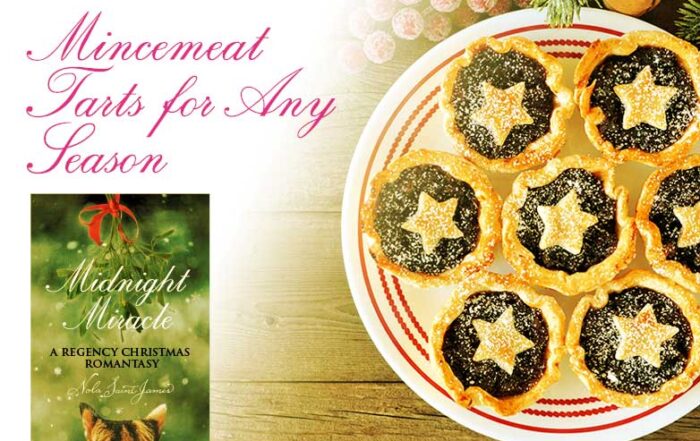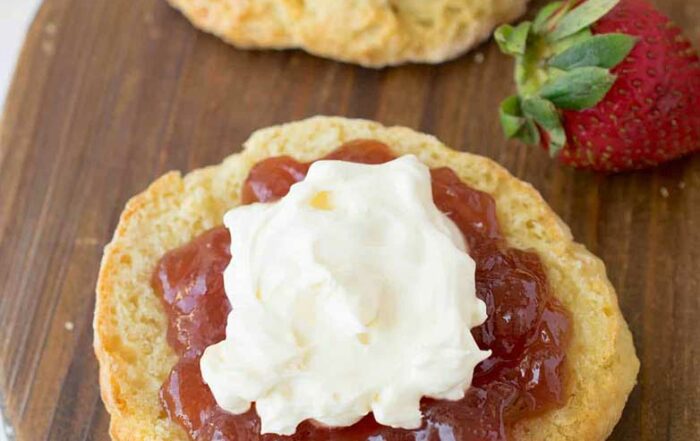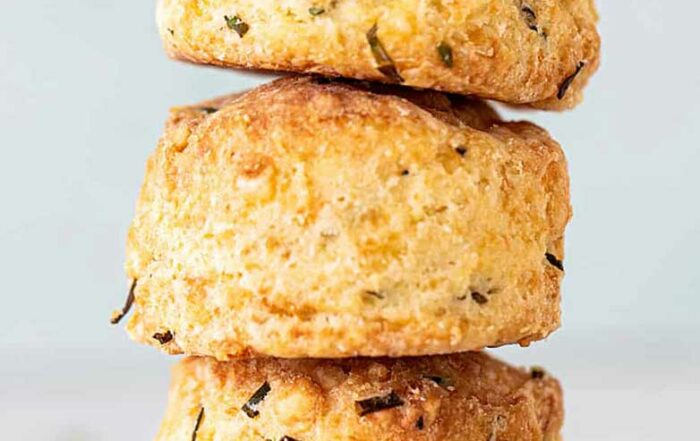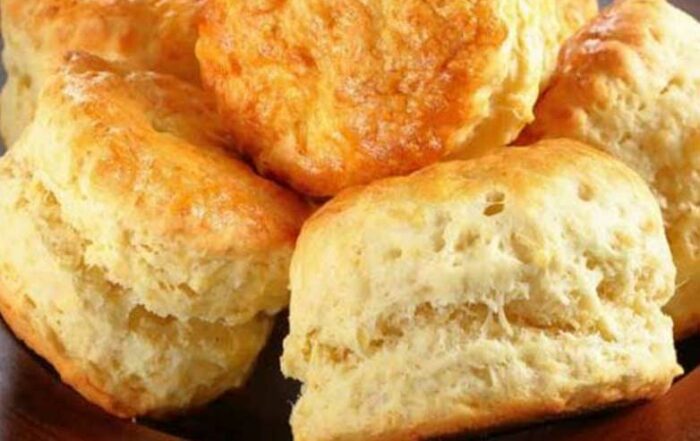
Entertaining with Nola
“Small cheer and great welcome makes a merry feast,” wrote Shakespeare. Whether one serves a simple but perfect scone or a dinner fit for a king, the pleasure of entertaining is ultimately in the company. The Quality knew how to entertain. So do we.

Scones
Scones! Don’t Get Me Started! Part I
As I write this, I am bobbing around somewhere in a very turbulent Atlantic on a lovely ocean liner that has a proud British pedigree. It is especially well known for serving “tea” every afternoon. Besides tea sandwiches – rectangular pieces of bread with a variety of fillings – small rolls with other fillings and pastries, they offer “cream tea.” The term “cream tea” specifically refers to a warm scone served with clotted cream and jam [...]
Scones, What to Know Before You Eat One, Part II
You are looking forward to your first cream tea. You see a pastry in front of you. If you’re an American, it looks like a buttermilk biscuit with raisins. You want to refer to it by name. What do you call it? Is it a “scon” – rhymes with “gone” – or is it a “scone” – rhymes with “own.”? [...]
So You Want To Eat A Scone? Part III
Eating a scone as part of a cream tea is a tricky business. One does not just pick up the biscuit and eat it. There are weighty matters to be determined. One can skip over the conundrum of how to pronounce the name of the delicacy itself by pointing to it.[...]

Setting the Table
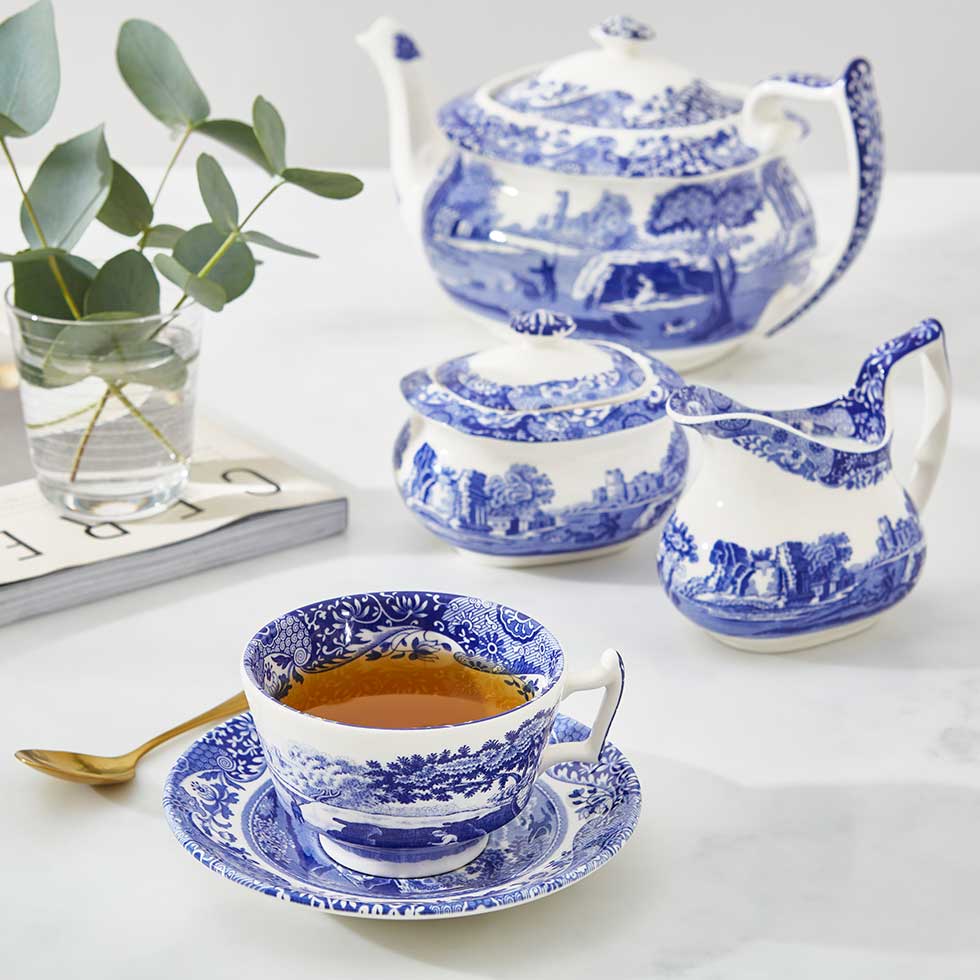
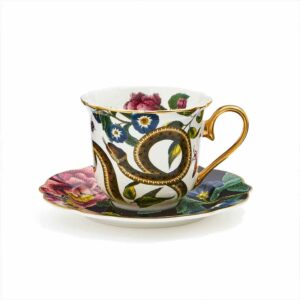 Milk in First?
Milk in First?
Almost every Regency novel features a scene where tea is served. In our imaginations, we envision beautiful china or silver tea pots, beautiful tea cups and saucers, lovely small plates for sandwiches and pastries, exquisite silver tea spoons and sugar tongs and pristine white linen napkins. The person who is serving asks each guest how he or she would like their tea: with milk? With sugar? If the answer is milk, which is poured first? The tea or the milk? The answer to that question depends on the social status of the hostess and therein lies a tale.
Before the 1600’s, English people drank water, herbal teas, milk, mead and various types of beverages fermented from grain or fruit. However, in the mid-1600’s, due to England’s exploration of the world, three new beverages were introduced. Green tea was imported from China, coffee was imported from Africa and the Ottoman Empire and chocolate was imported from Central and South America. While these were initially luxury goods, by the mid-1700’s they were more widely available. Unlike most other drinks, all of these new beverages were served hot. This meant that new types of drinking vessels had to be developed to make the consumption of these expensive treats an enjoyable experience.
Initially, the hot beverages tended to crack china tea cups. Also, the tea was very strong and bitter. Someone realized that putting milk in a cup before adding the tea would cool the beverage and keep the cup from cracking. It also moderated the bitterness of the tea. This led to the addition of milk in tea to become an almost universal custom.
But what if one didn’t like milk in tea? In the late 18th century, an English potter, Josiah Spode, created a “recipe” for what today is known as English bone china. His formula combined china stone and bone ash. Chinaware made from this formula was more delicate and whiter than any other porcelain found in Europe at the time. The difference between porcelain and bone china is that porcelain is somewhat thicker than bone china.
At about the same time, Josiah Wedgwood founded his own pottery company. Often referred to as the “Father of English Potters,” Wedgwood created new types of stoneware that were both decorative and useful. He also created new colors that would become closely linked with the Wedgwood name, the most renowned of which was “Wedgwood Blue.”
A side benefit of these innovations was that hot tea no longer cracked Spode and Wedgwood tea cups. This meant that those who preferred just a little milk could add it after their tea had been poured. And those who preferred tea without milk didn’t have to worry that their choice might ruin their hostess’s chinaware. These products, however, were more expensive than plain china. Therefore, those people who could not afford these upscale products would need to put in milk first so as to keep their less expensive china from cracking.
Thus, rich people came to add their milk, if any, after the tea. Poorer people added their milk first. To say that a person was a “milk in first” person was to say that they were of minor financial means. Today, almost all chinaware, whether expensive or inexpensive, can easily stand up to the heat of uncooled tea.
That being said, today, most people make tea with tea bags. If that is the case, the milk always goes in after the tea has steeped in the cup in order to give it time to brew properly. For more information about this topic – it’s called “Miffy” in England, by the way – milk in first – you might enjoy Mark Manellis’ blog on this question. He asserts that the idea that hot tea cracked china without milk is incorrect. As with so many things, two people, three opinions. You will enjoy his article. Read it with a nice hot cup of tea.
https://qmhistoryoftea.wordpress.com/2017/05/11/milk-in-first-a-miffy-question/

